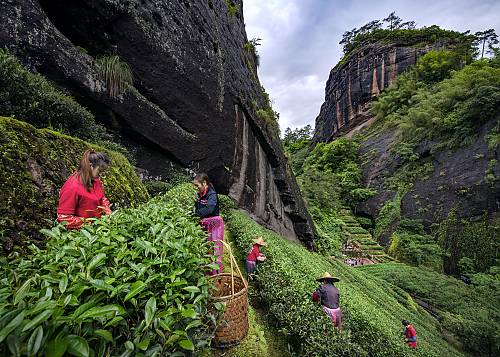 Traditional tea processing techniques and associated social practices in China
Traditional tea processing techniques and associated social practices in China
The element consists of knowledge, skills, and practices concerning management of tea plantations, picking of tea leaves, manual processing, drinking and sharing of tea. Based on natural conditions and local customs, tea producers have developed six categories of green, yellow, dark, white, oolong and black teas, as well as reprocessed teas like flower-scented teas, which results in over 2,000 tea products. Processing tools are woks, bamboo trays and drying frames, etc. Core skills employed include shaqing (enzyme inactivation), menhuang (yellowing), wodui (piling), weidiao (withering), zuoqing (leaves shaking and cooling), fajiao (oxidation or fermentation) and yinzhi (scenting). All these teas, with their diverse colors, aromas, flavors and shapes, meet different needs of people. Tea is ubiquitous in Chinese people’s daily life. Steeped or boiled tea is served in families, workplaces, tea houses, restaurants, temples, etc. and applied as an important media for communication in socializing and ceremonies such as wedding, apprentice-taking and sacrificing. Practices of greeting guests with tea and building good relationships within family and among neighborhood through tea-related activities are shared among multiple ethnic groups, and provide a sense of identity and continuity for communities, groups and individuals concerned. During the transmission, the element has nurtured systematic knowledge, extensive social practices, proven traditional skills and abundant handiwork. It reflects Chinese people’s values of modesty, harmony, comity and respect, and has profound influence on moral cultivation and personality shaping. It also facilitates exchanges and mutual learning among civilizations through the Silk Roads, hence playing a significant role in sustainable social development.
China
2022
